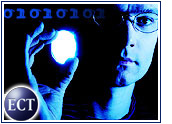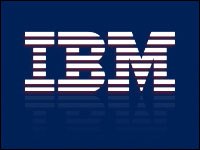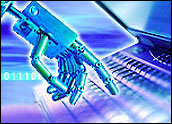
During the past several years, light-emitting diodes, or LEDs, have been cropping up in places where traditional lighting technology has dominated. It seems this trend — which gathered steam years ago with the incorporation of LED technology into consumer electronics devices — has begun to accelerate into other consumer areas.
An LED is a semiconductor device that can emit visible light when an electric current passes through it. The light is not particularly bright, but in most LEDs the output can range from red (at a wavelength of approximately 700 nanometers) to blue-violet (at about 400 nanometers). Some LEDs emit infrared energy; such devices are called infrared-emitting diodes (IREDs).
Most computer users run into LEDs every day. When you boot up a PC, an LED lights up to tell you that power is on and that the disk drive is active. While the technology itself probably won’t advance — except in terms of becoming smaller and more electrically efficient — many companies are developing interesting ways to incorporate LEDs into other forms.
In the near term, some analysts have speculated that LED technology could even help pave the way toward flexible screens — computer displays that actually would be bendable. While such technology might be several years off, what seems certain is that LEDs — which do not emit nearly as much heat as halogen bulbs and are much more electrically efficient than a standard incandescent bulb — could light the path into the future.
Technical Background
For the technically minded who aren’t familiar with how LEDs or IREDs operate, an LED or IRED consists of two elements of processed material called P-type semiconductors and N-type semiconductors. These two elements are placed in direct contact, forming a region called the P-N junction. In this respect, the LED or IRED resembles most other diode types, but there are important differences. In most cases, the LED or IRED has a transparent enclosure, allowing visible or IR energy to pass through and thus create the light.
The most important part of an LED is the junction located in the center of the bulb. Only when sufficient voltage is applied to the chip can the current flow and the electrons cross the junction. When an electron moves sufficiently close to a positive charge in the P region, the two charges recombine. Each time an electron recombines with a positive charge, electric potential energy is converted into electromagnetic energy.
For each recombination of a negative and a positive charge, a quantum of electromagnetic energy is emitted in the form of a photon of light with a frequency characteristic of the semiconductor material. Only photons in a very narrow frequency range can be emitted by any LED material. LEDs that emit different colors are made of different semiconductor materials and require different energy intensities to light them.
Efficiency and Applications
Efficiency, which could be the key to the future development of LEDs, continues to improve, according to Fran Douros, marketing manager at Lumileds Lighting. Douros said LEDs currently are running at 25 to 30 lumens per watt. The general consensus in the industry is that a good target is to achieve greater than 40 lumens per watt in 2004. In contrast, typical incandescent bulbs are quite inefficient. They turn out about 12.5 lumens per watt.
“As the volume goes up, the costs will continue to come down — and make the adoption into general lighting fixtures happen more rapidly,” Douros told TechNewsWorld. Douros predicts that new development will continue to extend the life of traditional light sources. But some of the technologies already have hit the efficiency wall. In contrast, “LED still has a long way to go in its technology life cycle for continued improvement,” said Douros.
In terms of using LEDs as computer or PDA displays, they still pale in comparison with liquid crystal display (LCD) technology, according to Hrishikesh Bidwe, research analyst at Technical Insights. But even that might change soon. Bidwe points to the latest version of organic light emitting diodes, called OLEDs, that have a thin layer of organic material sandwiched between two conducting electrode layers. The material glows when a moderate positive voltage is applied to it, and thus could be used in a manner much like current LCD screens.
“Since OLEDs have a low power requirement and a smaller form factor, they are better suited for devices such as palmtops and mobile devices,” Bidwe told TechNewsWorld. “But the cost of OLEDs is still high. Also, OLEDs have a shorter life span than most LCDs.”
Advances in Applications
Some of the biggest advances in the near term likely will not be in the LED technology itself, but in how the industry applies LED technology to nontraditional purposes, according to Jonathan Labbee, copresident of ANCSACO, a provider of LED signage systems for sports and entertainment facilities. Applying LEDs in unique and interesting ways, he said, is probably the point at which consumers will really take notice of the technology.
“The LED as it is now is very efficient, and although brightness will increase and electronics will get more efficient, the applications in which the technology will be used is really what is leading the way in terms of advancements,” Labbee told TechNewsWorld. “As LEDs and the electronics become more efficient and smaller, you will start seeing LEDs being packaged in many different ways. So the core technology will remain somewhat constant, but the packaging will be drastically different, offering more choices of applications.”
But while the technology behind LEDs is developing — and allowing the LEDs to become brighter while consuming less power — Labbee said LEDs still face some darkness in the overall marketplace. “I think that the area that is creating a downside to the LED industry is the lack of standards,” he told TechNewsWorld, echoing a much-uttered complaint about many new technologies that move from obscure to mainstream very quickly. “Companies make up specs or insinuate things that may lead a potential customer to misinterpret the quality of the product they are purchasing. A good standard system would greatly help the industry and help the customers make the best decision.”
Once standards arrive, predicts Labbee, the technology will be only a small portion of the decision-making process. “Where companies will be competing is in the ability to design, deliver and service concepts that use technology rather than using technology for a concept,” he said.




















































